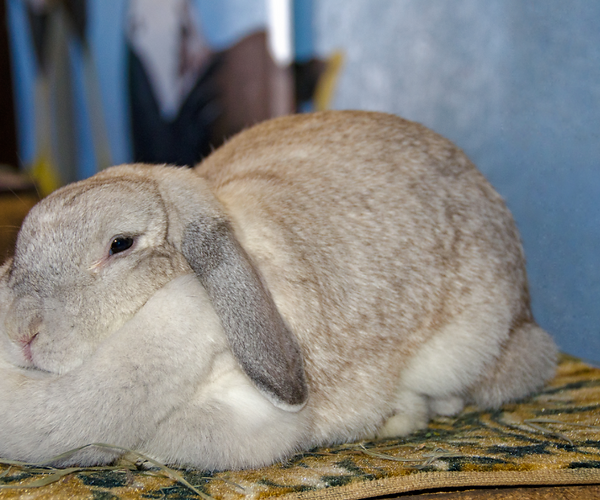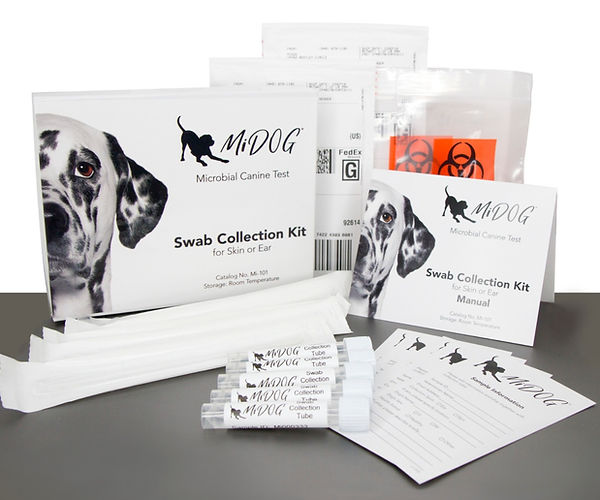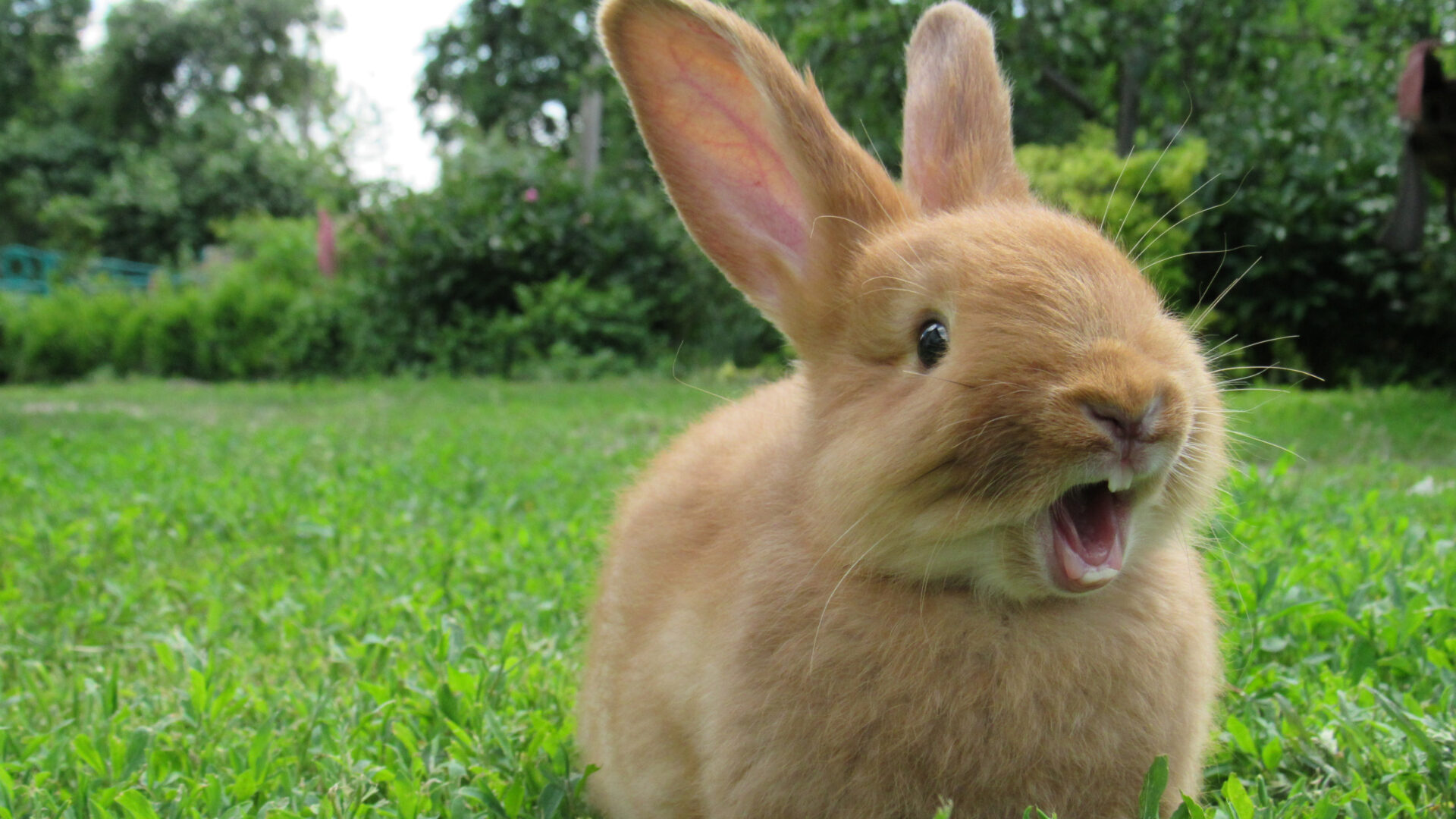
Rabbit UTI Diagnostic Test from MiDOG
Has your bunny been hopping to the bathroom more often than normal? Or maybe you’ve noticed that their urine has an abnormal color and/or consistency? While these behaviors may seem more puzzling than concerning, they could actually be indicative of a painful and dangerous urinary tract infection (UTI).
Urinary Tract Infections in Rabbits
With the help of Next-Gen Sequencing (NGS) technology, several recent studies have revealed that urine is not actually sterile, and the plethora of bacteria that inhabit the urinary system and are considered part of a normal, healthy urinary bacterial community [1]. Urinary tract infections (UTIs) occur in dysbiotic states, where pathogenic bacteria outgrow protective, healthy bacteria and ultimately wreak havoc on your bunny’s urogenital system [2].
One study reports that only approximately 25% of healthy pet rabbits experienced renal lesions caused by urinary tract disease, suggesting that symptoms may be difficult for pet owners to identify and treat [3]. Lower urinary tract disorders are particularly common in rabbits and are often compared with feline lower urinary tract disease due to similarities in presentation and predisposing factors [4].
UTIs can cause a significant amount of pain and increased need to urinate, and these infections are often caused by urine retention associated with large amounts of calcium deposits [4]. In nature, rabbits urinate frequently to mark territory and consequently void pathogenic bacteria. By contrast, in a domestic setting rabbits may not have the stimuli needed to mark territory; moreover, sedentary/overweight rabbits may hunch when they urinate and retain urine longer than normal [4]. Ultimately, this retention can cause sedimentation of urine within the bladder, producing thick, sludge-like excretions which may result in secondary bacterial infections [5].
While bunny UTI severity exists on a spectrum, the following UTI symptoms indicate that your rabbit may be suffering and needs to visit a veterinarian:
- Pain in urination
- Sludgy urine
- Bloody urine
- Urinating small amounts
- Loss of litter training
- Urine scalding
- Hunched posture
Risk Factors for UTIs in Rabbits
Predisposing factors for UTIs vary between different countries due to loss of mobility (due to spinal, hip, or abdominal pain), a high calcium diet, loss of balance (due to middle ear disease, or encephalitozoonosis), and/or lack of social factors stimulating marking behavior [4, 6]. In general, female rabbits have been found to have a higher number of bacterial isolates than males, although this data was collected through a culture-based method [2]. Notably, while high calcium does not always translate to UTI manifestation, low calcium levels in rabbit food serve as a protective factor against the development of sludgy urine and related urine disorders [4].

Overweight rabbits are at a higher risk of lower urinary tract disorders.
Diagnosis & Treatment for Rabbit UTIs
The most common intervention for rabbit UTIs is a tailored antibiotic treatment plan, specific to the pathogens complicating your rabbit’s urinary tract [5]. Additionally, pain medication may also be prescribed depending on the severity of the infection. Sediment examinations and culture-based urinalysis have conventionally been used as diagnostic tools to inform an appropriate antibiotic treatment plan [4]. However, advancements in defining the rabbit urinary microbiome, complicated by antibiotic resistance are making it necessary for veterinarians to consider contemporary measures to identify and quantify the bacteria in your rabbit’s urine.
While research on the microbial characterization of rabbit urine is limited, the most commonly reported pathogenic isolates in rabbits with UTIs are staphylococci and Pseudomonas aeruginosa [7]. Additionally, because UTIs are often caused by fastidious anaerobes, which are bacteria that cannot survive when exposed to oxygen, culture-based studies will consequently produce a no growth culture in spite of there being clinical indications of a UTI [5].
New and Powerful Diagnostic Alternative
The MiDOG All-in-One microbiome test may provide the answer to the diagnostic conundrum that rabbit UTIs pose. Utilizing next-generation sequencing technology to detect and quantify all microbial DNA through untargeted and comprehensive sequencing and quantitative comparisons to reference databases, the MiDOG NGS technology provides a useful opportunity to shed light on the microbial makeup of your rabbit’s urine for clinical application. The MiDOG microbiome test is a microbial identification test grounded on scientific research that provides veterinarians DNA evidence for the guided treatment of rabbit infections, such as UTIs.
The MiDOG All-in-One Test has helped veterinarians to treat chronic UTIs in the past. Read one of our case studies here to learn more:
Link to case study: https://www.midogtest.com/urinary-tract-infection-case-study

Find out if your vet uses MiDOG before you book your next appointment!
References:
[1] Melgarejo, T., Oakley, B., Krumbeck, J., Tang, S., Krantz, A., & Linde, A. (2021). Assessment of bacterial and fungal populations in urine from clinically healthy dogs using next‐generation sequencing. Journal Of Veterinary Internal Medicine, 35(3), 1416-1426. https://doi.org/10.1111/jvim.16104
[2] Reavill, D. R., & Lennox, A. M. (2020). Disease Overview of the Urinary Tract in Exotic Companion Mammals and Tips on Clinical Management. The veterinary clinics of North America. Exotic animal practice, 23(1), 169–193. https://doi.org/10.1016/j.cvex.2019.09.003
[3] Smith, M. (2021). Diagnosing and treating urinary tract disease in rabbits. In Practice, 43(3), 143-151. https://doi.org/10.1002/inpr.28
[4] Urogenital Diseases. (2016). https://veteriankey.com/urogenital-diseases/.
[5] Krempels, D. Rabbit Urinary Tract Disorders. House Rabbit Society of Miami. Retrieved from http://www.bio.miami.edu/hare/urinary.html.
[6] Suckow, M. A., Brammer, D. W., Rush, H. G., & Chrisp, C. E. (2002). Biology and Diseases of Rabbits. Laboratory Animal Medicine, 329–364. https://doi.org/10.1016/B978-012263951-7/50012-0
[7] Akinboade, O., Adegoke, G., Ogunji, F., & Nwufoh, K. (1981). Pathogenic microbes isolated from rabbit urine. Laboratory Animals, 15(3), 277-279. https://doi.org/10.1258/002367781780893821
[8] Diagnosis: Urine Scalding Dermatitis. (2005), 34(2), 24-25. https://doi.org/10.1038/laban0205-24
[9] Murray, B., Flores, C., Williams, C., Flusberg, D., Marr, E., & Kwiatkowska, K. et al. (2021). Recurrent Urinary Tract Infection: A Mystery in Search of Better Model Systems. Frontiers In Cellular And Infection Microbiology, 11. https://doi.org/10.3389/fcimb.2021.691210
[10] Sobel, J., & Kaye, D. (1984). Host factors in the pathogenesis of urinary tract infections. The American Journal Of Medicine, 76(5), 122-130. https://doi.org/10.1016/0002-9343(84)90254-7
[11] Zalewska-Piątek, B., Olszewski, M., Lipniacki, T., Błoński, S., Wieczór, M., & Bruździak, P. et al. (2020). A shear stress micromodel of urinary tract infection by the Escherichia coli producing Dr adhesin. PLOS Pathogens, 16(1), e1008247. https://doi.org/10.1371/journal.ppat.1008247
[12] Sihra, N., Goodman, A., Zakri, R. et al. Nonantibiotic prevention and management of recurrent urinary tract infection. Nat Rev Urol 15, 750–776 (2018). https://doi.org/10.1038/s41585-018-0106-x
[13] Uthamanthil, R. K., Hachem, R. Y., Gagea, M., Reitzel, R. A., Borne, A. T., & Tinkey, P. T. (2013). Urinary catheterization of male rabbits: a new technique and a review of urogenital anatomy. Journal of the American Association for Laboratory Animal Science : JAALAS, 52(2), 180–185.
Categories: Next-Gen DNA Sequencing Technology, Rabbits, Urinary Tract Infection (UTI)

